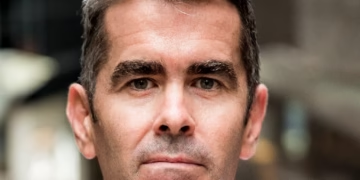Noel Quinn, Group Chief Executive, said:
“These were promising results against a backdrop of the continuing impacts of Covid-19 on the global economy. I’m pleased with the significantly lower credit losses in the quarter, and we are moving at pace to adapt our business model to a protracted low interest rate environment. We are accelerating the transformation of the Group, moving our focus from interest-rate sensitive business lines towards fee-generating businesses, and further reducing our operating costs. We also intend to increase our rate of investment in Asia, particularly in wealth, the Greater Bay Area, south Asia, trade finance and sustainable finance.
The Group’s capital and liquidity ratios strengthened further in the quarter despite the challenging economic conditions. A decision on whether to pay a dividend for the 2020 financial year will depend on economic conditions in early 2021, and be subject to regulatory consultation. We will seek to pay a conservative dividend if circumstances allow.”
Financial performance (vs. 3Q19)
- Reported profit after tax down 46% to $2.0bn and reported profit before tax down 36% to $3.1bn, mainly from lower revenue. Results in 3Q20 included our share of an impairment of goodwill by our associate, The Saudi British Bank (‘SABB’), of $0.5bn. Adjusted profit before tax down 21% to $4.3bn.
- Our operations in Asia continued to perform resiliently with reported profit before tax in 3Q20 of $3.2bn, despite interest rate headwinds.
- Reported revenue down 11% to $11.9bn, reflecting the impact of interest rate reductions on our deposit franchises across all global businesses, partly offset by favourable market impacts in life insurance manufacturing. Reported revenue was also partly offset by a favourable movement in credit and funding valuation adjustments and higher revenue in Global Markets.
- Net interest margin (‘NIM’) of 1.20%, down 36 basis points (‘bps’) from 3Q19. NIM was down 13bps from 2Q20, reflecting the continuing impact of interest rate reductions due to the Covid-19 outbreak.
- Reported expected credit losses and other credit impairment charges (‘ECL’) down $0.1bn to $0.8bn. The 3Q20 charge reflected a stabilisation of the forward economic outlook from 2Q20, while wholesale stage 3 charges were in part offset by increased releases related to historical default cases.
- Reported operating expenses down 1% and adjusted operating expenses down 3%, despite continued investment, due to the impact of our cost-saving initiatives, reduced discretionary expenditure and a lower performance-related pay accrual.
- Common equity tier 1 capital (‘CET1’) ratio of 15.6%, up 0.6% from 15.0% at 2Q20, reflecting a decrease in RWAs (on a constant currency basis), capital generation through profits and foreign currency translation differences.
Financial performance (vs. 9M19)
- Reported profit after tax down 62% to $5.2bn and reported profit before tax down 57% to $7.4bn from higher ECL and lower revenue, partly offset by a fall in operating expenses. Reported results included a $1.3bn impairment of software intangibles and the non-recurrence of an $828m dilution gain in 9M19. Adjusted profit before tax down 44% to $9.9bn.
- Reported revenue down 9% to $38.7bn, primarily due to the progressive impact of interest rate reductions across our global businesses, in part offset by higher revenue in Global Markets. Adjusted revenue down 6% to $38.5bn.
- Reported ECL up $5.6bn to $7.6bn, mainly due to the impact of the Covid-19 outbreak and the forward economic outlook. Allowance for ECL on loans and advances to customers up from $8.7bn at 31 December 2019 to $13.7bn at 30 September 2020.
- Reported operating expenses down 3% and adjusted operating expenses down 4%, as a reduction in the performance-related pay accrual and lower discretionary expenditure more than offset the impact of continued investment.















































